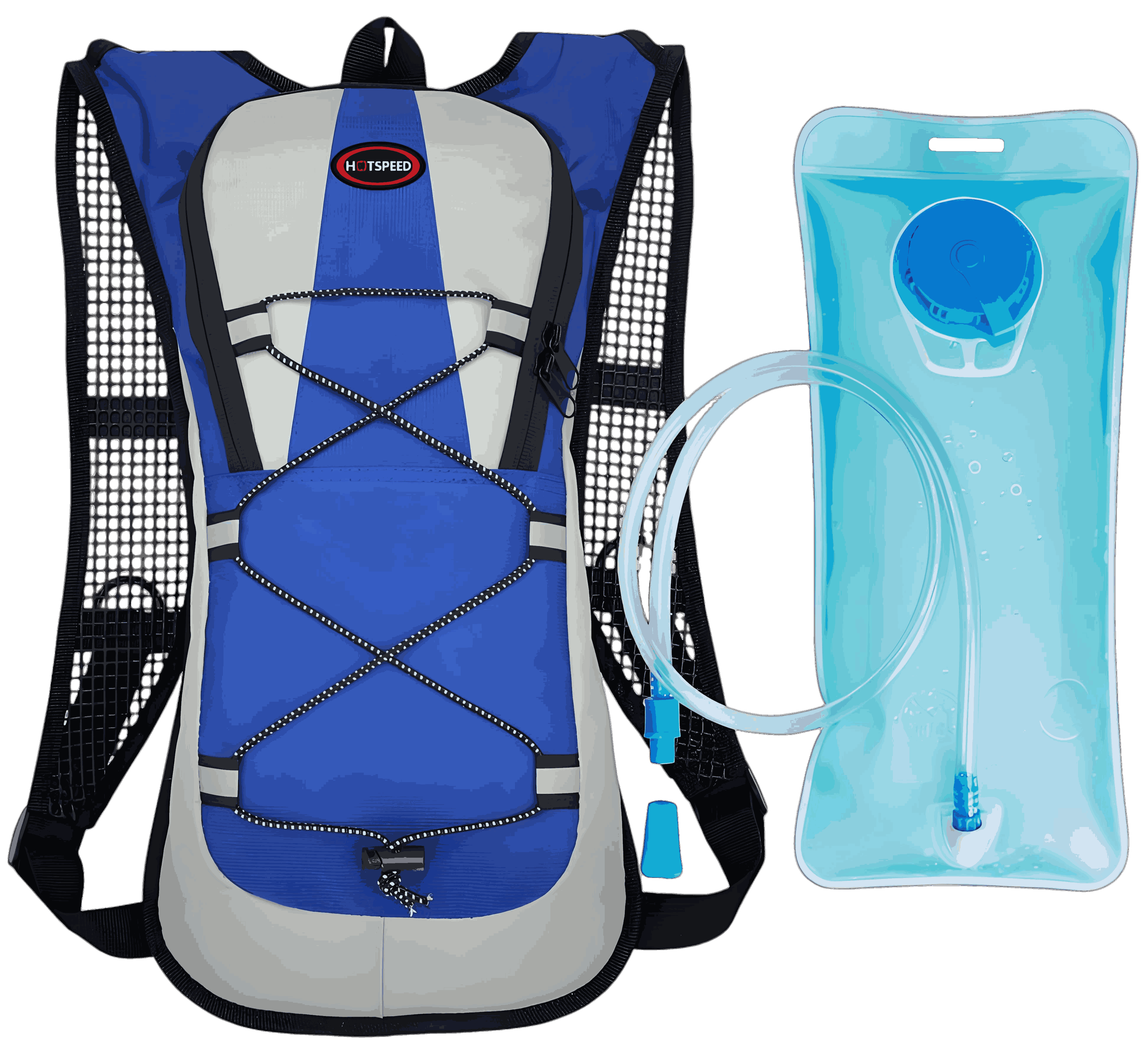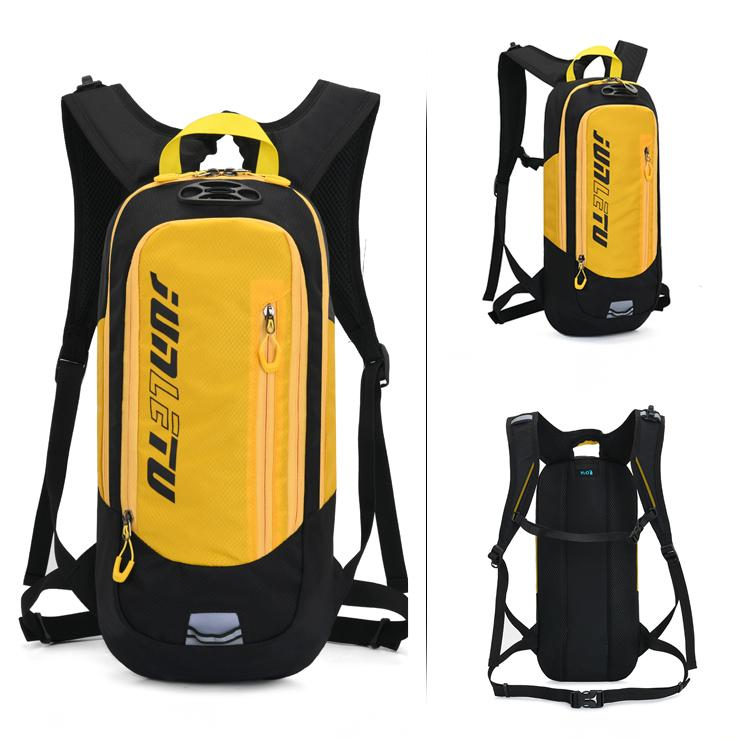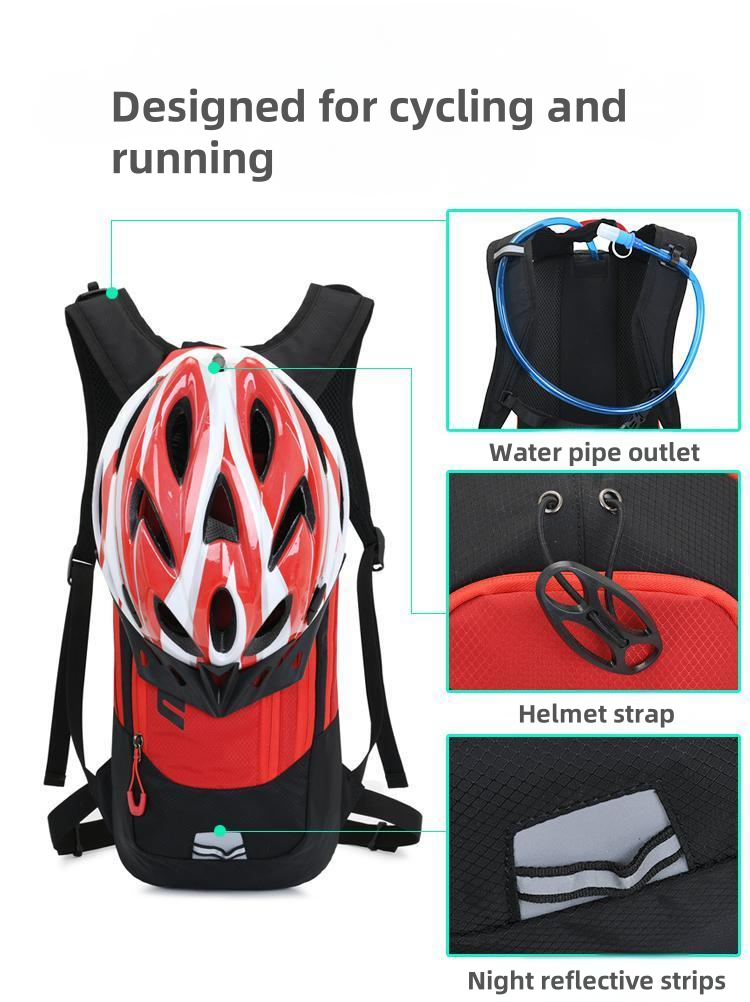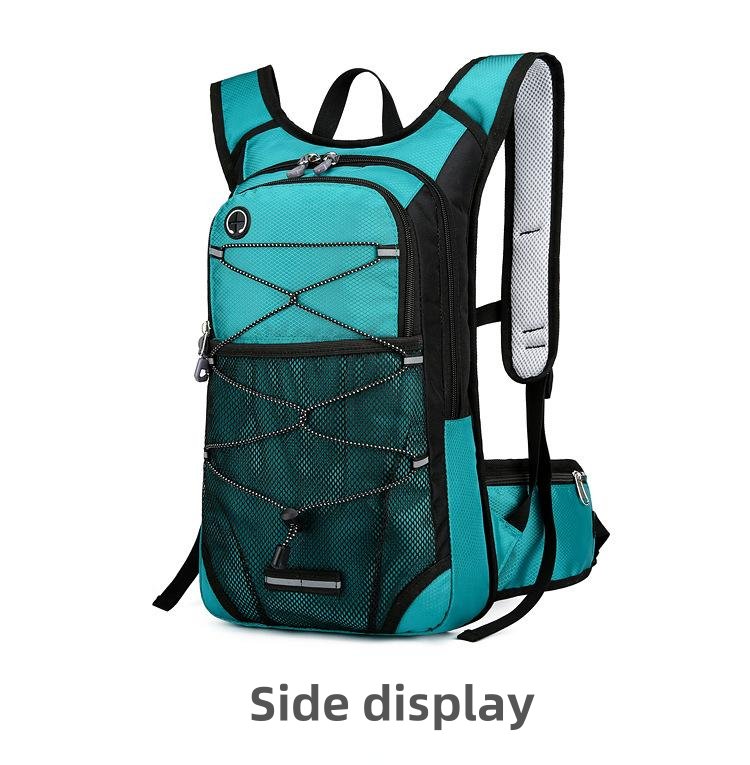As an avid hiker who’s spent countless hours on trails, from rugged mountain paths to serene forest loops, I’ve learned that the right gear can make or break your experience. One issue that keeps popping up for many hikers, especially those new to using hydration packs, is dealing with a hydration pack tube that’s too long. It dangles, gets caught on branches, or just feels cumbersome. I’ve been there—on a steep ascent, the last thing you want is a tube flapping against your chest or tangling in your gear. In this article, I’ll share practical solutions to manage an overly long hydration tube, drawing from my own trial-and-error moments and insights from fellow outdoor enthusiasts. Whether you’re a weekend trekker or a thru-hiker, these tips will help you keep your hydration system in check and your focus on the trail.

1. Why a Long Hydration Tube Is a Problem
A hydration pack’s tube—often called the drinking tube or hose—connects the water reservoir to the mouthpiece, letting you sip on the go. Most hydration packs come with tubes around 36–40 inches long, designed to fit a wide range of users. But for some, this length is excessive, leading to issues like:
Dangling and Snagging: A long tube can swing around, catching on backpack straps, branches, or rocks.
Discomfort: Extra tubing can rub against your skin or clothing, causing irritation during long hikes.
Hygiene Concerns: A tube that drags on the ground or brushes against dirty gear can pick up grime, affecting water taste or safety.
Cluttered Setup: Excess tubing makes your pack look messy and can tangle with other gear, slowing you down when you need to adjust or access items.
I remember my first hike with a new hydration pack. The tube was so long it kept getting caught on my shoulder strap, and by the end of the day, it was covered in trail dust. Frustrating? Absolutely. But after some tweaks, I found ways to tame it. Let’s explore how you can do the same.
2. Solutions for Managing an Overly Long Hydration Tube
Here are practical, field-tested ways to deal with a hydration tube that’s too long. Each method has its strengths, depending on your hiking style and gear setup.
a. Trim the Tube to Fit
One of the most effective solutions is to cut the tube to a custom length. Most hydration pack tubes are made of flexible materials like TPU or silicone, which can be safely trimmed without compromising function. Here’s how I do it:
Measure the Ideal Length: Put on your hydration pack and hold the mouthpiece where it feels comfortable to sip (usually near your shoulder or chest). Note where the tube extends beyond this point.
Mark and Cut: Use a marker to indicate the cut point, then use sharp scissors or a utility knife to trim the tube cleanly. Cut at a slight angle for easier reattachment.
Reattach the Mouthpiece: Most mouthpieces are designed to slide back onto the trimmed tube. Ensure a secure fit to prevent leaks.
Test for Leaks: Fill the reservoir and test the system to confirm everything is sealed.
I trimmed the tube on my 3L hydration pack by about 6 inches, and it made a world of difference—no more dangling or snagging. Just be cautious not to cut too much; you want enough length to sip comfortably without straining your neck.
Pro Tip: Keep the trimmed section in case you need to replace or extend the tube later.

b. Use Tube Management Accessories
If you’re hesitant to cut your tube, accessories can help keep the excess under control. These are widely available and easy to use:
Tube Clips or Magnets: Many hydration packs come with clips or magnetic holders that attach the tube to your pack’s strap. If yours didn’t, you can buy universal clips for $5–$10. I clip mine to my shoulder strap, keeping it snug and accessible.
Tube Sleeves: A neoprene or fabric sleeve can bundle excess tubing and protect it from dirt. I’ve used a sleeve on long hikes to keep the tube clean and streamlined.
Cable Ties or Velcro Straps: Small Velcro straps or reusable cable ties can loop excess tubing into a tidy coil. I keep a few in my pack for quick adjustments.
On a recent group hike, a friend used a magnetic clip to secure her tube, and it stayed put even during a scramble. These accessories are affordable and don’t require permanent changes to your gear.
c. Route the Tube Strategically
Sometimes, the issue isn’t the tube’s length but how it’s positioned. Smart routing can minimize annoyance:
Thread Through Pack Loops: Many backpacks have built-in loops or channels for hydration tubes. Thread the tube through these to keep it close to the pack.
Underarm Routing: Instead of draping the tube over your shoulder, route it under your armpit and up to your chest. This reduces swinging and keeps the tube out of the way.
Tuck Excess Tube: If your pack has a side pocket or mesh panel, tuck the extra tubing there to keep it secure.
I switched to underarm routing on a windy trail, and it stopped the tube from flapping in the breeze. Experiment with different routes to find what feels natural for you.
d. Coil or Fold the Tube
For a non-permanent fix, you can coil or fold the excess tube to shorten its effective length:
Coil Method: Loop the extra tubing into a small coil and secure it with a rubber band or Velcro strap near the reservoir outlet.
Fold Method: Fold the tube back on itself and use a clip to hold it in place. This works best for tubes with some flexibility.
I’ve used the coil method on shorter hikes when I didn’t want to commit to cutting the tube. It’s quick and reversible but can add slight bulk.
e. Upgrade to a Shorter Tube
Some brands offer replacement tubes in different lengths. If your hydration pack’s tube is excessively long, check the manufacturer’s website or outdoor retailers for a shorter option. For example, Osprey and CamelBak sell tubes ranging from 30 to 36 inches.
I swapped out the tube on my old pack for a shorter CamelBak model, and it was like getting a custom fit. Just ensure the new tube is compatible with your reservoir and mouthpiece.

3. Comparing Tube Management Methods
To help you choose the best approach, here’s a table comparing the main solutions based on key factors:
| Method | Ease of Use | Cost | Permanence | Effectiveness |
|---|---|---|---|---|
| Trim the Tube | Moderate | Free | Permanent | High, custom fit |
| Tube Clips/Magnets | Easy | $5–$10 | Reversible | High, tidy setup |
| Strategic Routing | Easy | Free | Reversible | Medium, depends on pack |
| Coil or Fold Tube | Easy | Free or $1–$5 | Reversible | Medium, adds bulk |
| Replace with Shorter Tube | Moderate | $10–$20 | Permanent | High, precise fit |
This table shows that trimming or using accessories like clips offers the most effective solutions, while routing and coiling are great for quick, no-cost fixes.
4. Additional Tips for Hydration Pack Success
Beyond managing tube length, here are some extra tips to optimize your hydration pack experience:
Clean Regularly: Long tubes can harbor bacteria or mold if not cleaned properly. I rinse mine with warm water and a mild soap after every hike, using a cleaning brush for tight spots.
Insulate in Cold Weather: In chilly conditions, a long tube can freeze. Use an insulated tube sleeve or blow water back into the reservoir after sipping to prevent this.
Check for Wear: Inspect the tube for cracks or weak spots, especially if you’ve coiled or folded it repeatedly. I replace mine every couple of years to avoid leaks.
Practice Accessibility: Make sure the mouthpiece is easy to reach without looking. I practice sipping while walking to ensure my setup is intuitive.
On a winter hike, I forgot to insulate my tube, and it froze mid-trail—lesson learned! These small habits can save you from bigger headaches.

5. When to Consider a Different Hydration System
If your tube’s length continues to frustrate you despite these fixes, it might be worth exploring other hydration options:
Smaller Reservoirs: A 1L or 1.5L reservoir often comes with a shorter tube, ideal for shorter hikes or smaller packs.
Bottle-Based Systems: If tubes are too much hassle, switch to waist-mounted or handheld water bottles. I use a soft flask for quick day hikes.
Custom Packs: Some high-end packs, like those from Salomon or Gregory, offer integrated tube management systems for a seamless fit.
I switched to a bottle for urban hikes where I didn’t need a full pack, and it simplified my setup. Consider your hiking style when choosing.
6. The Bigger Picture: Balancing Convenience and Functionality
A long hydration tube might seem like a minor annoyance, but on the trail, small discomforts add up. By trimming, securing, or rerouting the tube, you can transform your hydration pack into a reliable companion. I’ve found that a well-managed hydration system lets me focus on the scenery, not my gear. With a bit of tweaking, you can turn a frustrating tube into a non-issue.
Looking ahead, manufacturers are starting to address tube length with adjustable or modular designs. I’ve seen prototypes with retractable tubes—exciting stuff! For now, these solutions will keep you hydrated and happy on the trail.
Wrapping Up: Tame the Tube, Enjoy the Trek
Dealing with a too-long hydration pack tube doesn’t have to derail your hiking adventures. Whether you trim it, secure it with clips, or rethink your routing, there’s a solution that fits your needs. As someone who’s wrestled with dangling tubes and tangled gear, I can assure you that a little effort goes a long way. Your hydration pack should make your hikes easier, not harder—so take control of that tube and hit the trail with confidence.
Got more questions about hiking gear or trail tips? I’m all ears—let’s make your next adventure the best yet!

Related Q&A
1. Can I cut my hydration tube without ruining it?
Yes, as long as you cut cleanly with sharp scissors and reattach the mouthpiece securely. Test for leaks afterward and keep the trimmed piece for future repairs.
2. How do I clean a long hydration tube?
Rinse with warm water and mild soap after each use. Use a tube cleaning brush or pipe cleaner for thorough scrubbing, and air-dry completely to prevent mold.
3. Are there hydration packs with shorter tubes?
Yes, some brands offer shorter tubes (30–36 inches) or replacement options. Check with manufacturers like CamelBak, Osprey, or Platypus for compatibility.
4. What if my tube keeps slipping out of clips?
Try stronger magnets or Velcro straps for a firmer hold. Double-check that the clip is compatible with your tube’s diameter, and reposition it for better tension.
5. Can a long tube affect water flow?
Not significantly, but excess length can cause kinks or slow flow if the tube is coiled tightly. Ensure smooth routing and avoid sharp bends.